Abstract
Rose, Michael J., Jr. (Veterans Administration Hospital, Washington, D.C.), Stephen A. Aron, and Bernard W. Janicki. Effect of various nonionic surfactants on growth of Escherichia coli. J. Bacteriol. 91:1863–1868. 1966.—Escherichia coli cultivated in media containing 0.5, 1.0, 2.0, or 4.0% concentrations of surface-active polyoxyethylene derivatives of formaldehyde polymers of octyl phenol (Triton WR-1339; Macrocyclon) or of sorbitan mono-fatty acid esters (Tween 20, 40, 60, and 80) exhibited significantly retarded growth only at the highest concentration. To determine the mechanism of bacteriostasis, certain derivatives and compounds related to the surfactants were investigated. Experiments with compounds related to the Triton-type agents demonstrated that incorporation of monomeric substances (Triton X-205, X-305, Igepal CA-730, or Dowfax 9N20) into the medium at a concentration of 4.0% did not inhibit the growth of E. coli. It was concluded that the formaldehyde polymer was essential for growth inhibition by the polyoxyethylene derivatives of octyl phenol. The inhibitory activity of the Tween compounds, in contrast, appeared to result from the unesterified fatty acids which contaminate the commercial preparations. Polyol (60), the sorbitan polyoxyethylene derivative of Tween 60 and the basic structural unit of all the Tween-type compounds, and a Tween 80 preparation which was purified by extraction of the unesterified oleic acid, were not inhibitory. Moreover, the amount of free oleic acid present as a contaminant of Tween 80 was found to be sufficient to cause significant growth inhibition. These results and the observation that E. coli does not appear to hydrolyze the esterified fatty acid of Tween 80 led to the conclusion that growth inhibition obtained with various Tween compounds probaby is a function of their respective fatty acid contaminants.
Full text
PDF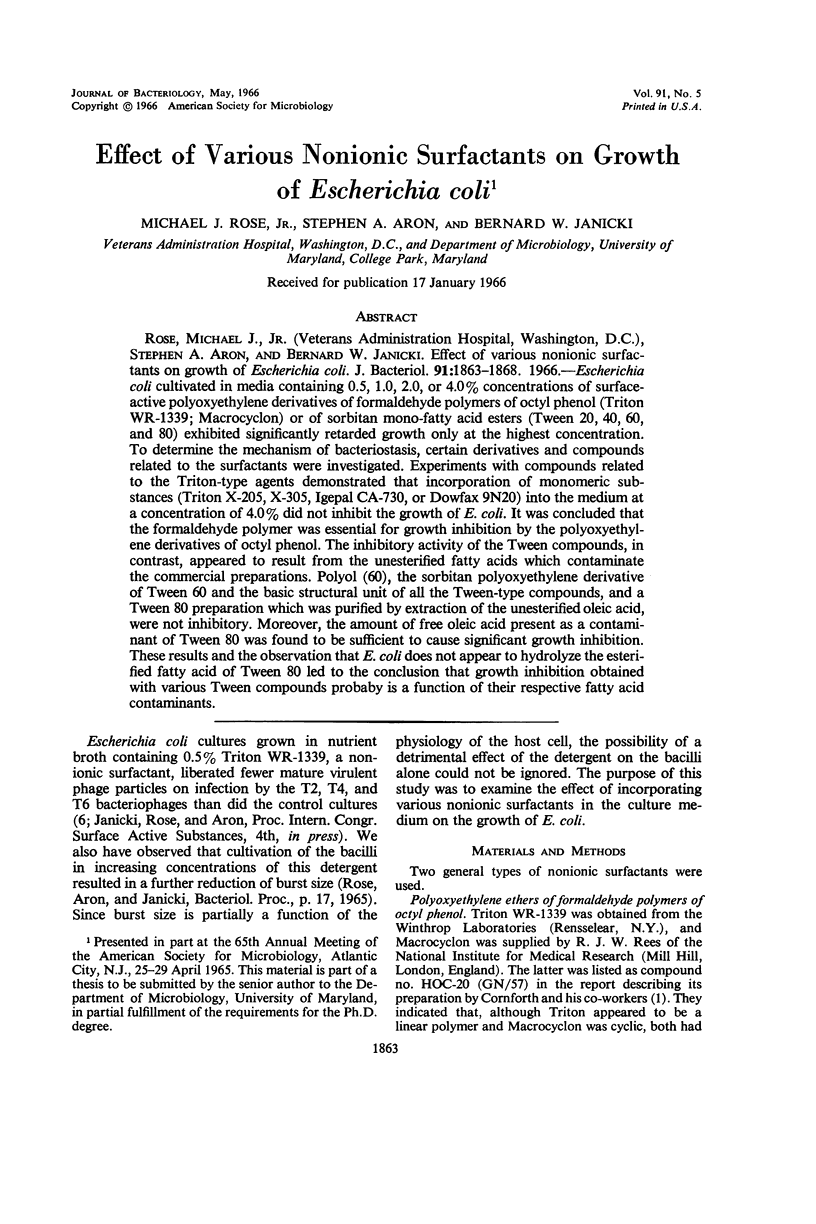
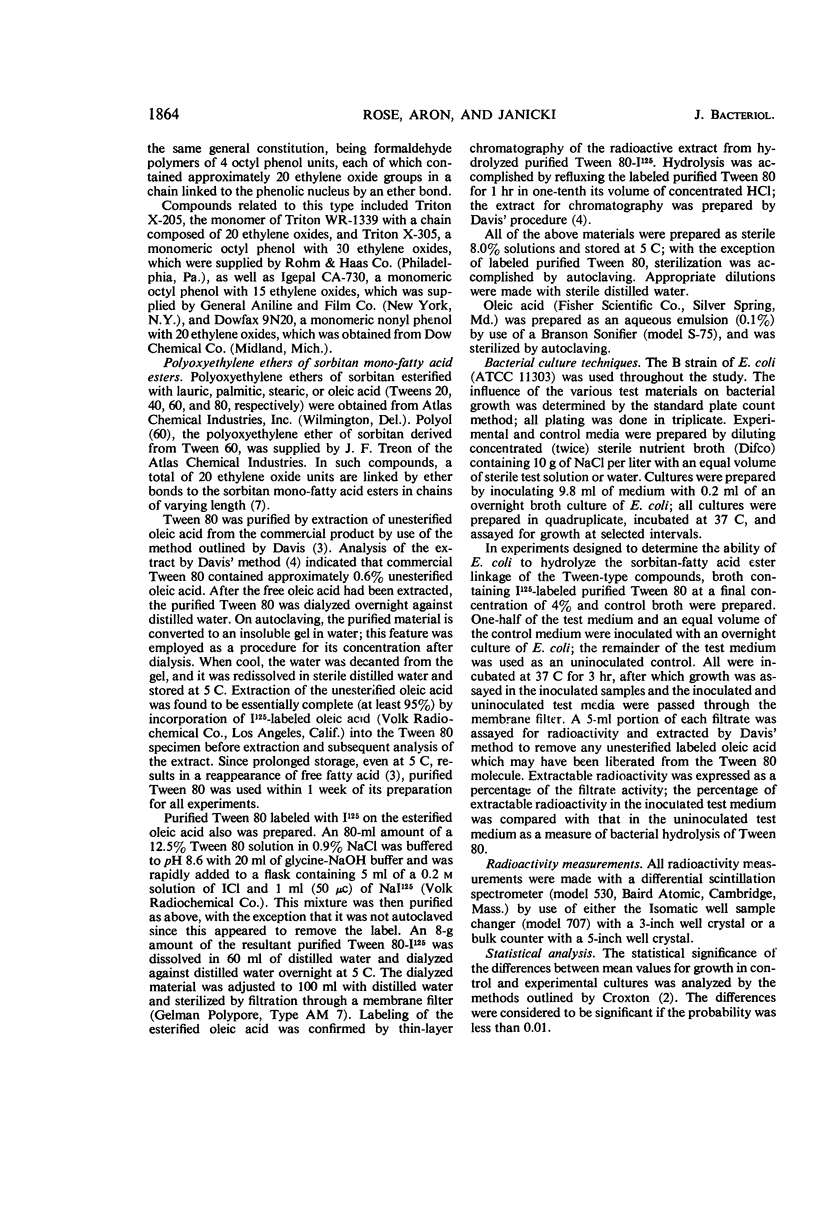
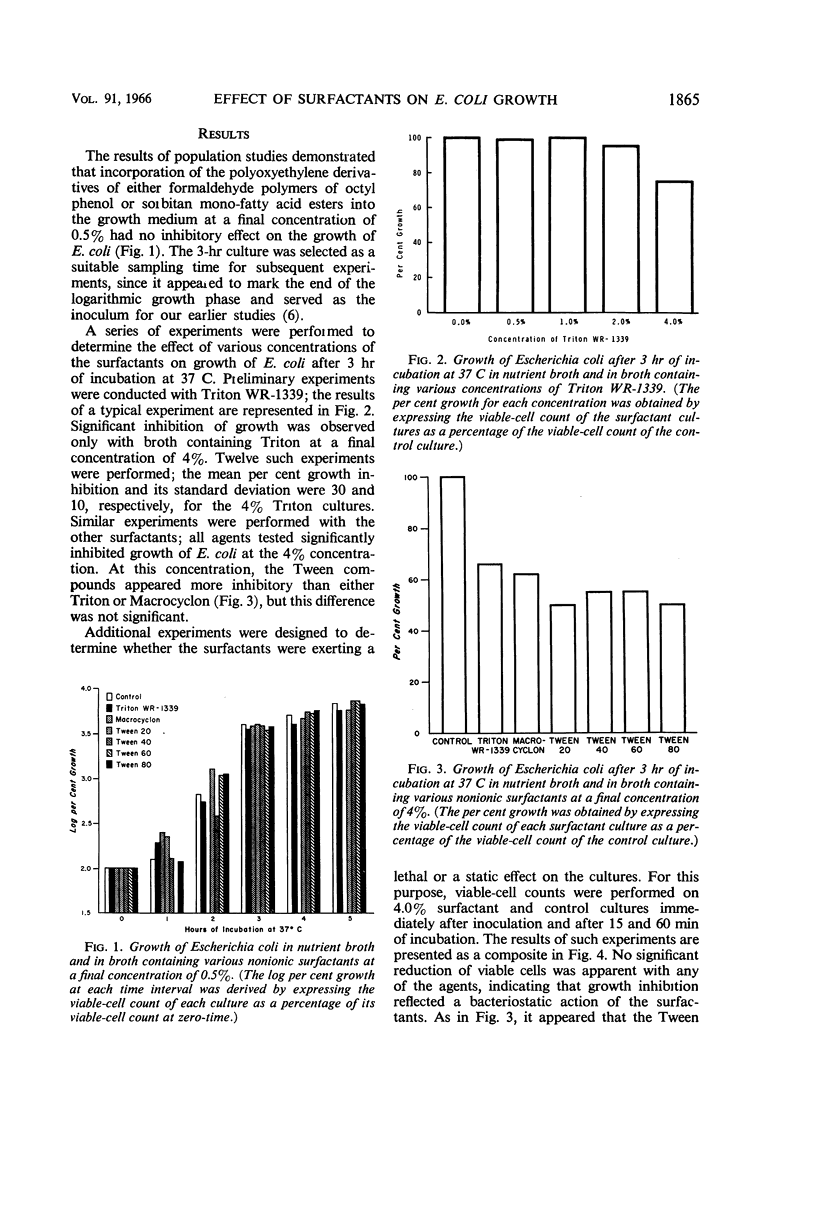
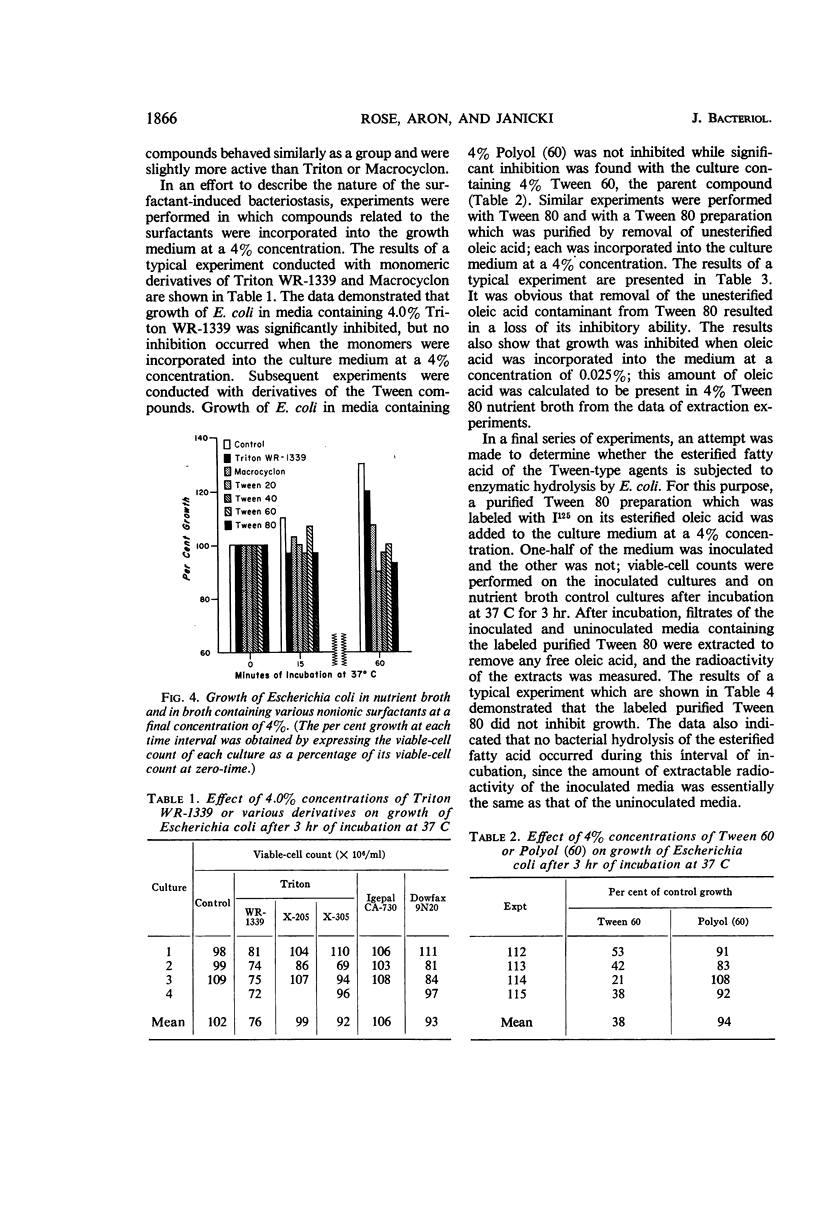
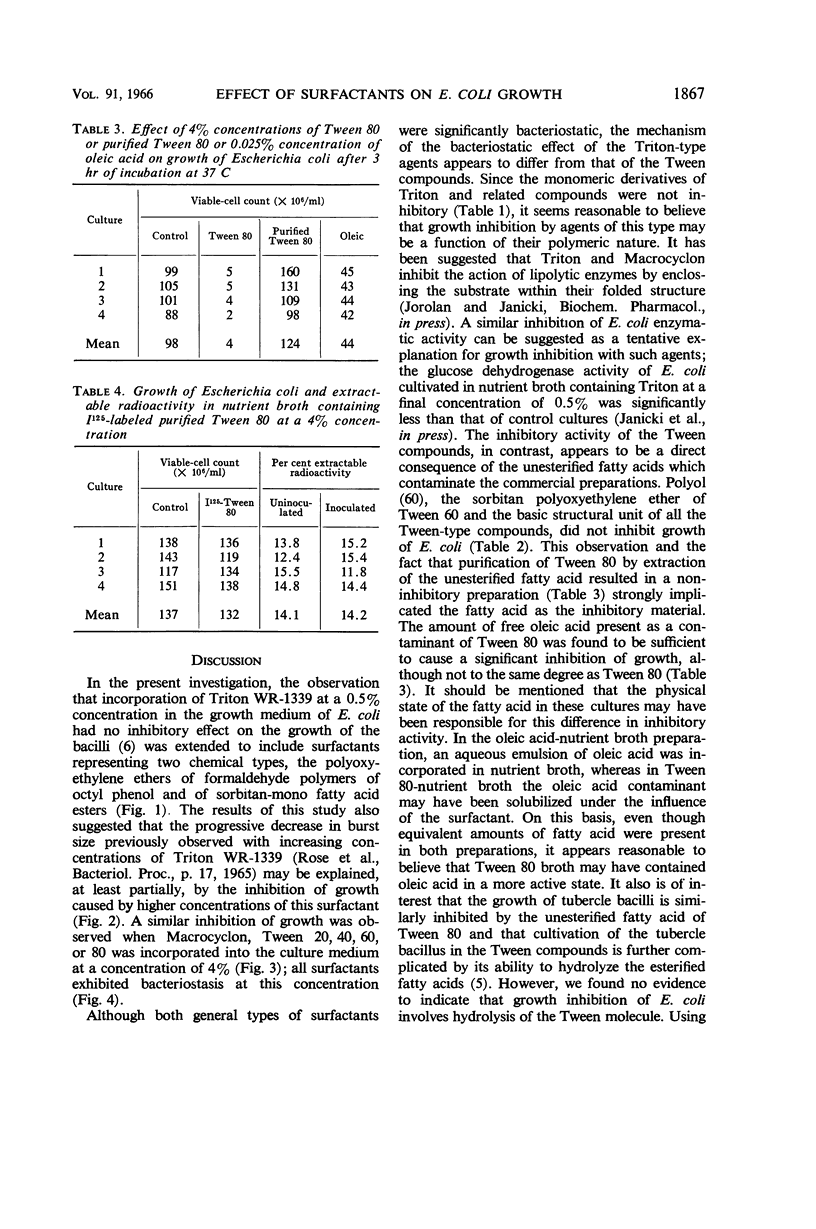
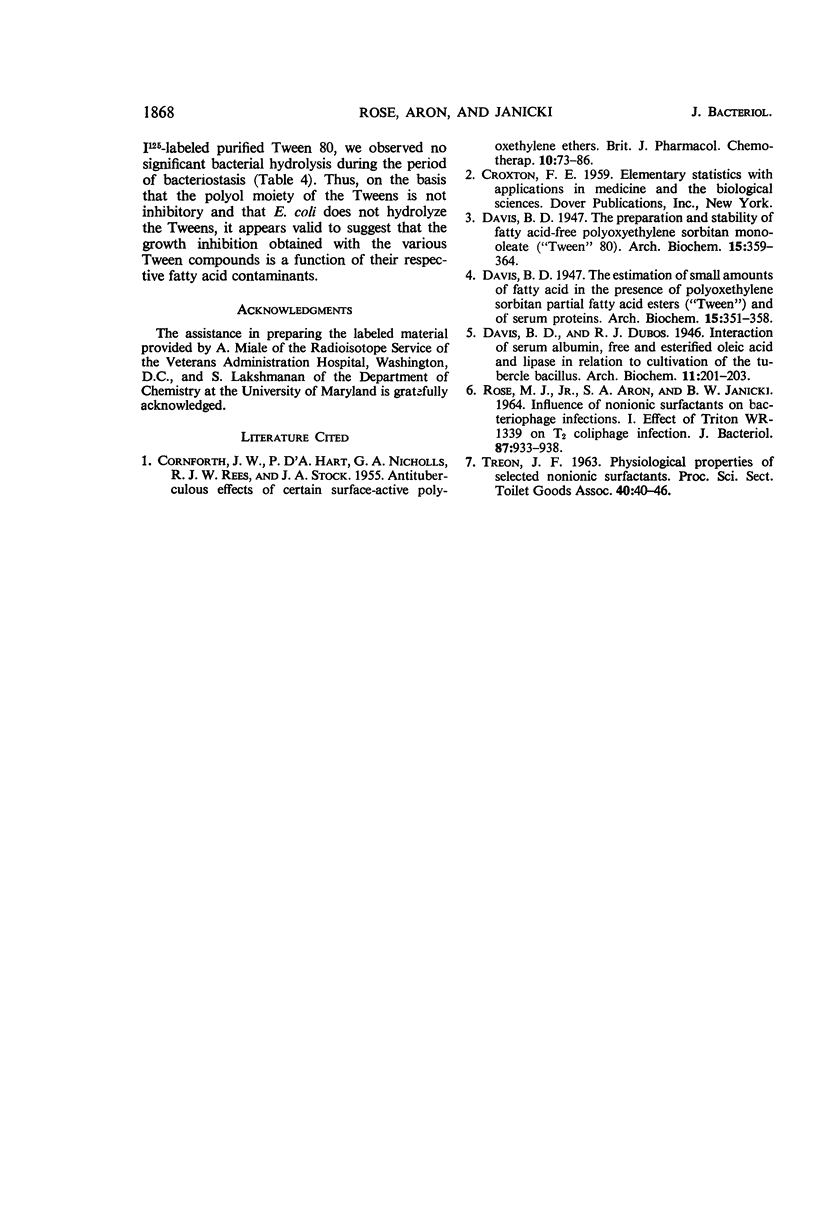
Selected References
These references are in PubMed. This may not be the complete list of references from this article.
- CORNFORTH J. W., HART P. D., NICHOLLS G. A., REES R. J., STOCK J. A. Antituberculous effects of certain surface-active polyoxyethylene ethers. Br J Pharmacol Chemother. 1955 Mar;10(1):73–88. doi: 10.1111/j.1476-5381.1955.tb00063.x. [DOI] [PMC free article] [PubMed] [Google Scholar]
- ROSE M. J., Jr, ARON S. A., JANICKI B. W. INFLUENCE OF NONIONIC SURFACTANTS ON BACTERIOPHAGE INFECTIONS. I. EFFECT OF TRITON WR-1339 ON T2 COLIPHAGE INFECTION. J Bacteriol. 1964 Apr;87:933–938. doi: 10.1128/jb.87.4.933-938.1964. [DOI] [PMC free article] [PubMed] [Google Scholar]


